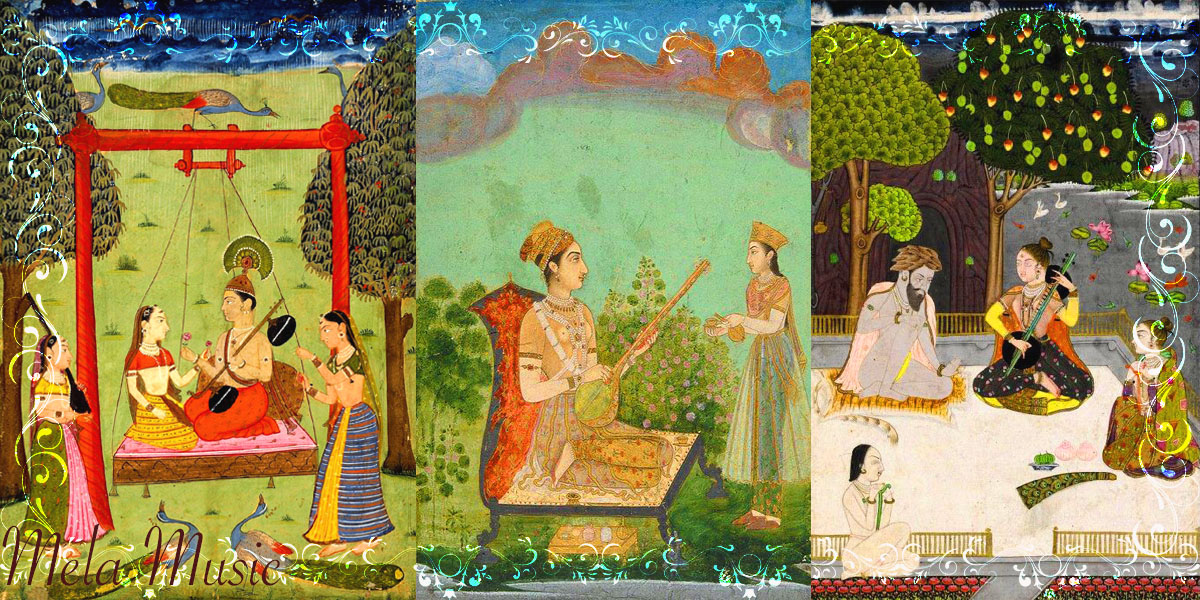
The term gharana literally means “family tradition” and has been associated not only with vocal music but also with various musical instruments such as the tabla, sitar, sarod, and more. These instrumental gharanas, like their vocal counterparts, represent distinct lineages or schools of playing specific instruments, each with its unique approach to technique, repertoire, and improvisational style.
In the realm of tabla playing, notable tabla gharanas include the Delhi, Ajrara, Farukhabad, Lucknow, Benaras and Punjab gharanas. These gharanas have contributed to the evolution and refinement of tabla as a percussion instrument, with each gharana showcasing its own distinct playing style and techniques. For instance, the Delhi gharana emphasizes intricate finger movements and clarity of sound production, while the Ajrara gharana is known for its dynamic and complex rhythmic patterns.
Similarly, instrumental gharanas have played a significant role in shaping the development of their respective instruments. In sitar playing, gharanas such as Imdadkhani also known as Etawah and Maihar have made notable contributions. Each gharana carries its own musical heritage, with the Imdadkhani gharana focusing on melodic intricacy, highlighting virtuosic and flamboyant styles, and the Maihar gharana seeking a balance between melody and rhythm.
Likewise, in sarod playing, gharanas like Senia and Shahjahanpur have left a lasting impact. The Senia gharana, stemming from Mian Tansen’s lineage, emphasizes emotional expressiveness and intricate melodic ornamentations, while the Shahjahanpur gharana showcases a dynamic and powerful playing style. These instrumental gharanas have preserved and propagated the unique techniques and aesthetics associated with their respective instruments.
The gharana system has played a pivotal role in the evolution and development of the khayal style in Indian classical music. While dhrupad singing, the precursor of khayal, had its own gharana known as vanis, the distinction between them was not as well-defined as in khayal.
Over the centuries, several prominent khayal gharanas have emerged, including Gwalior, Agra, Atrauli-Jaipur, Kirana, and Patiala. Among these, the Gwalior gharana holds a special place as the oldest and often referred to as the “mother” of all gharanas. Known for its open-throated singing, simplicity of form, and smooth transitions between musical notes, the Gwalior gharana’s vocal technique was pioneered by Nathan Pirbux Khan of Gwalior.
While the gharana parampara (tradition) is gradually declining in the face of changing 21st-century lifestyles and ideologies, its significance in preserving and enriching Hindustani music cannot be underestimated. The patronage of classical music historically came from intellectually and culturally sophisticated audiences, whether in solemn temples, princely courts, or aristocratic homes. These discerning audiences, as described by Milton, may have been few in number but played a crucial role in fostering the genius of classical music.
The gharana system provided a framework for musical education and the transmission of knowledge from one generation to the next. It facilitated the nurturing of unique styles, techniques, and aesthetics within the Indian classical music tradition. While its prominence may have diminished in recent times, the gharana system’s impact on Hindustani music remains significant and continues to inspire musicians and enthusiasts alike.
